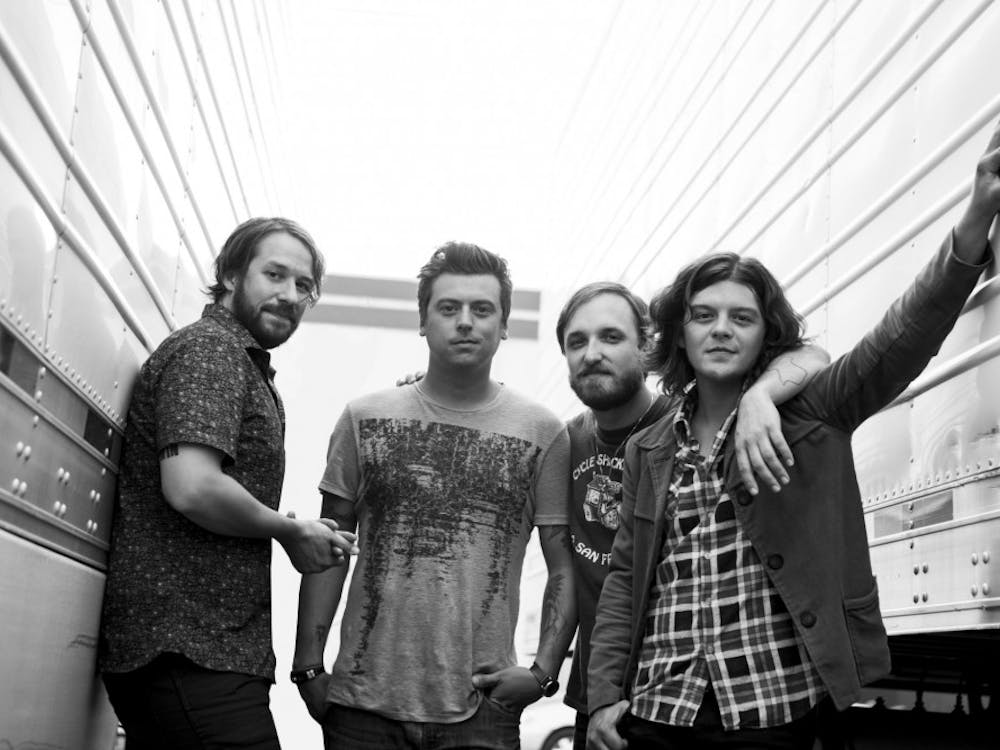By Christina Moran '07
Most UP students and faculty say they still feel safe biking to and from campus despite the changing weather, decreasing daylight, and Portland's two recent cycling fatalities.
Nursing professor Susie Stragnell rides to and from campus from her home in Northwest Portland twice a week. Stragnell believes the key to avoiding accidents is for both cyclists and drivers to be patient and give themselves plenty of travel time.
"You're anxious to get going, and then you might not be as careful looking (for a car or cyclist)," she said.
Transportation safety has been the topic of much discussion after two cyclists were killed last month at Portland intersections.
Tracey Sparling, 19, died Oct. 11 in a collision with a cement truck at the corner of Southwest 14th Avenue and West Burnside Street. The incident occurred when the truck made a right turn into the path of Sparling, who was proceeding straight through the intersection in the bike lane. Sparling was in the truck driver's blind spot, according to police.
A second cyclist, Brett Jarolimek, 31, was killed 11 days later at the intersection of North Interstate and Greeley avenues when a garbage truck making a right turn failed to yield to the bike lane. Both collisions involved "right-hooks" - when a vehicle turns right and crosses the path of a cyclist heading straight through the intersection.
Portland Transportation Commissioner Sam Adams called for an emergency meeting last Friday to address transportation safety. Adams met with a group of local officials, who discussed potential equipment, enforcement and educational solutions.
"We are working to develop a package that will provide sustained safety improvements for all the users of the right of way - especially bicycles and pedestrians, which are the most vulnerable users of the right of way," Adams said at the meeting.
Stragnell said she uses extra caution whenever she sees a right turn signal at an intersection that she plans to ride through. She advises that all drivers and cyclists in this right-turn situation make eye contact and acknowledge each other's presence.
"I just wait and see what that first car is doing," she said.
Senior Caleb DeChant also said he makes sure drivers see him before he proceeds through an intersection on his bike.
"I think that's the biggest key to being safe," he said.
In an unscientific online Beacon poll, 12 of 20 respondents said they feel "somewhat safe" biking around Portland. Six said they feel "very safe," and two said they "never feel safe."
In a total of 249 bicycle crashes at Portland intersections from 2003 to 2006, the Oregon Department of Transportation (ODOT) placed primary responsibility on drivers for 50 percent of the incidents, according to ODOT data. Cyclists were responsible for 42 percent of the crashes, and both drivers and cyclists were to blame for 8 percent.
Sparling's and Jarolimek's deaths mark the third and fourth cycling fatalities in Portland so far this year. No cyclists were killed in 2006. The increase in fatalities, however, could be the result of a higher number of cyclists.
According to the Bicycle Transportation Alliance, the number of cyclists crossing the Burnside Bridge on an average work day has increased by 35 percent over the last year.
DeChant said he feels safe overall, but uses extra caution riding on certain roads and at certain intersections. The St. Johns Bridge is one roadway that can be especially dangerous for cyclists, he said. DeChant used to cross the bridge on the street, but now rides on the sidewalk because he thinks the bridge's narrow lanes don't give cyclists enough room.
"You can't ride as fast on the sidewalk, but it's not worth it to risk it," he said.
Stragnell said she feels completely safe riding around Portland, but recognizes her vulnerability to cars and other vehicles, even on roads with bike lanes.
"I'm also aware that that's just a white line and so I have to be real careful," she said.
According to both Stragnell and DeChant, the easiest way for cyclists to enhance their safety is to wear helmets and use lights at night. DeChant also advises riders to consider wet road conditions when taking corners.
Drivers can do their part, too, he said, by realizing that cyclists may be traveling faster or slower than they expect.
"A cyclist is a pretty unpredictable thing on the road," DeChant said.







